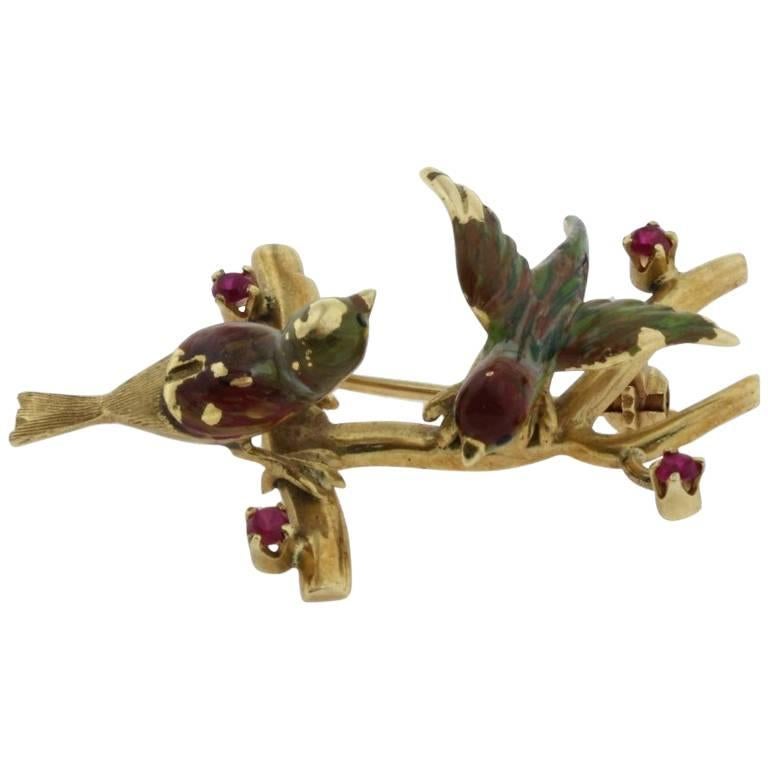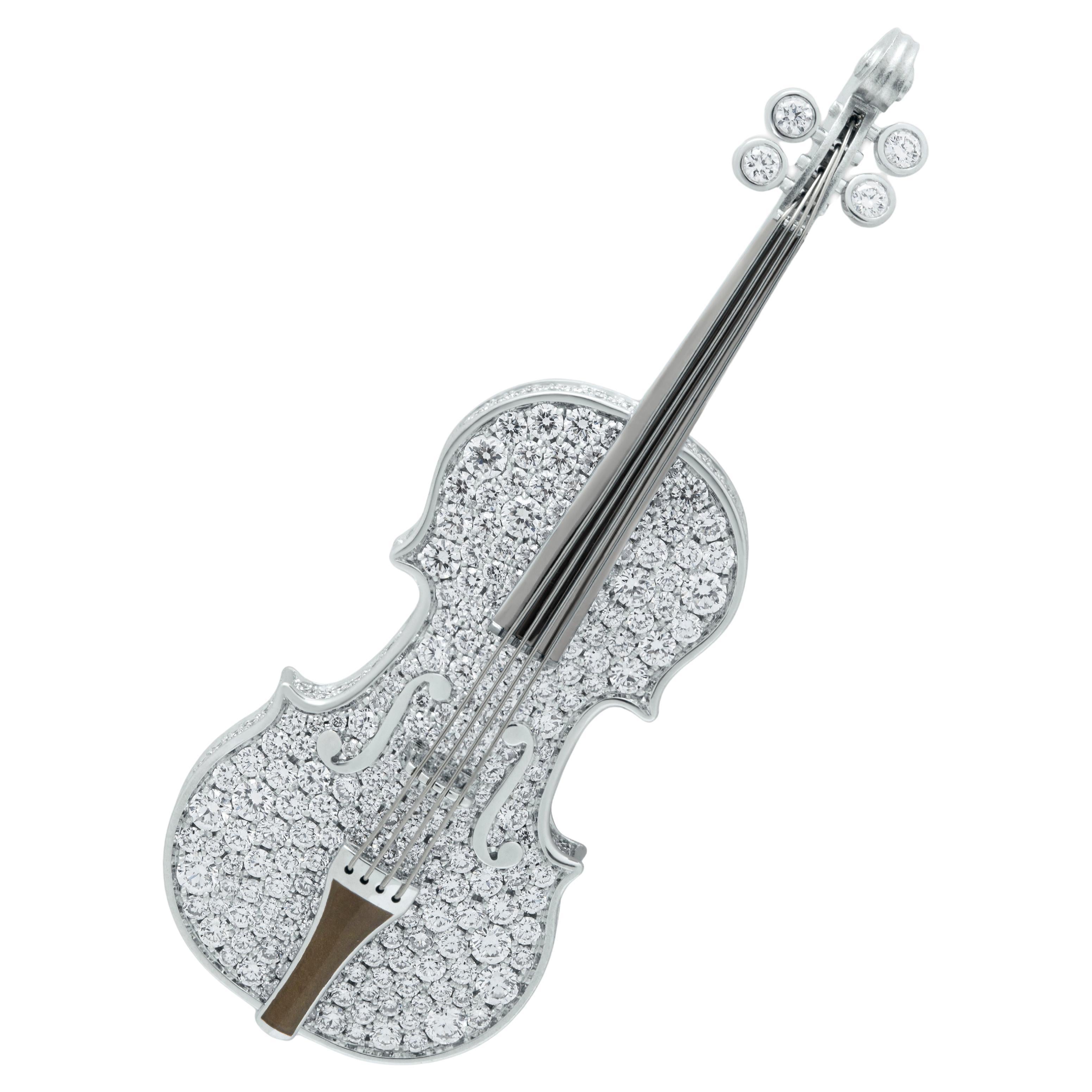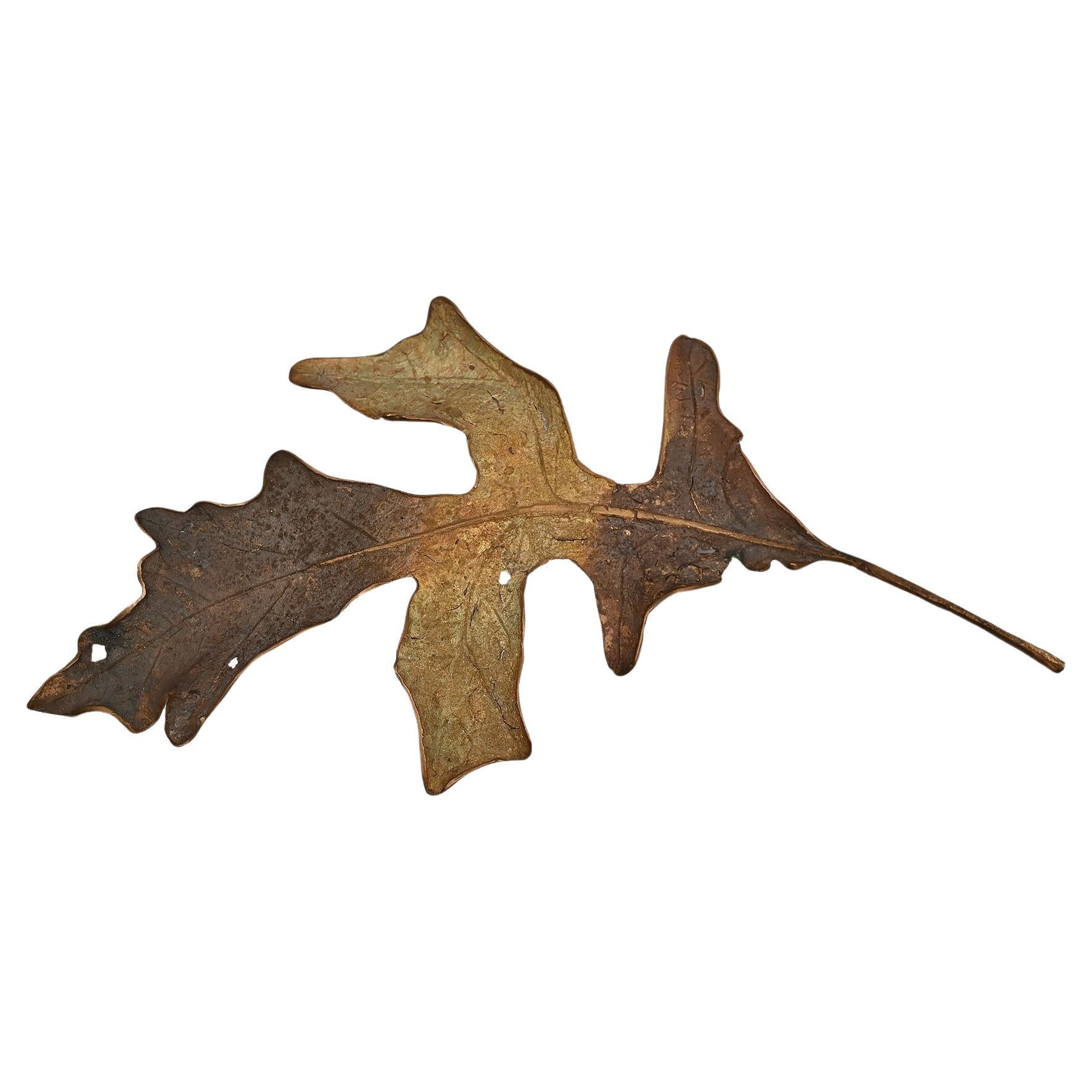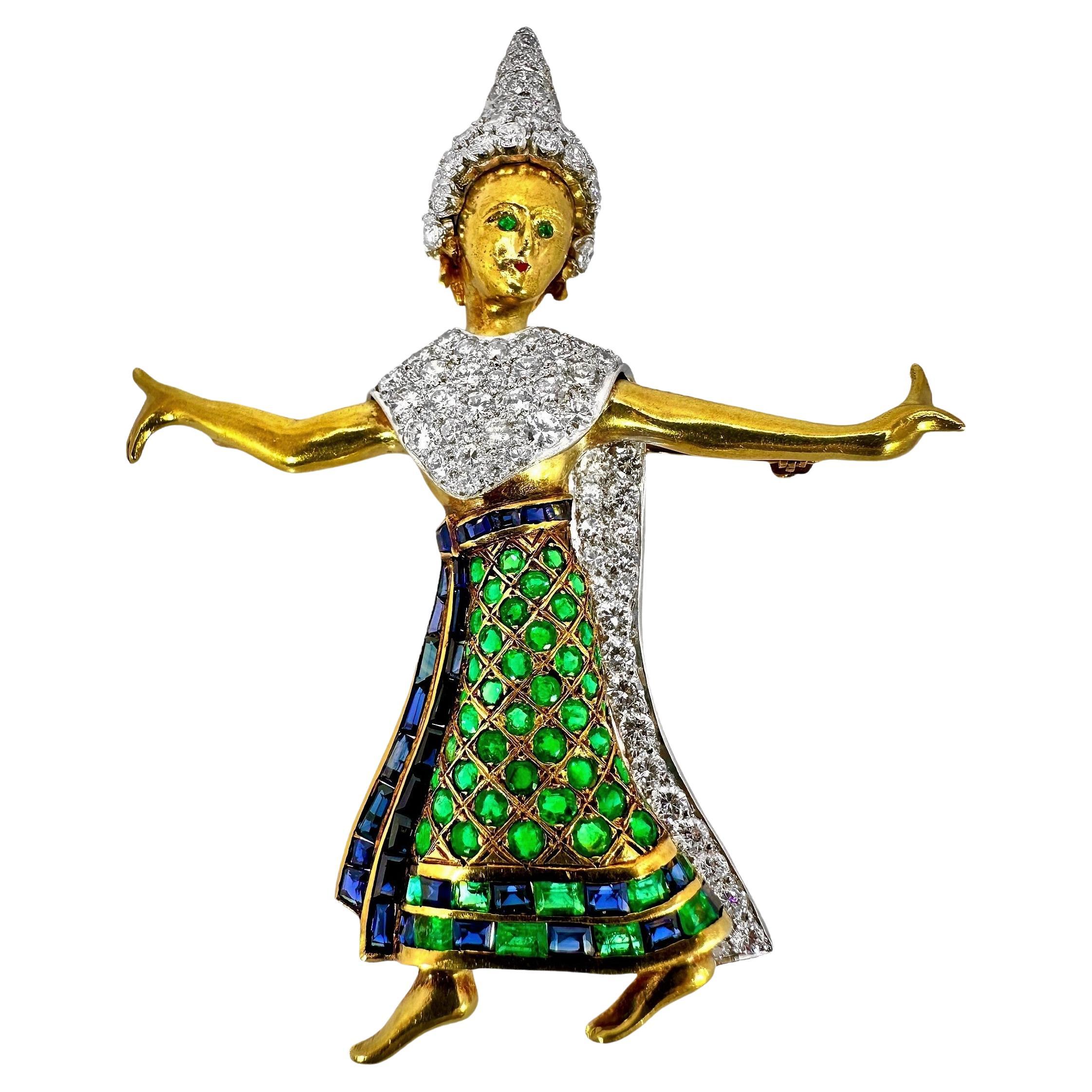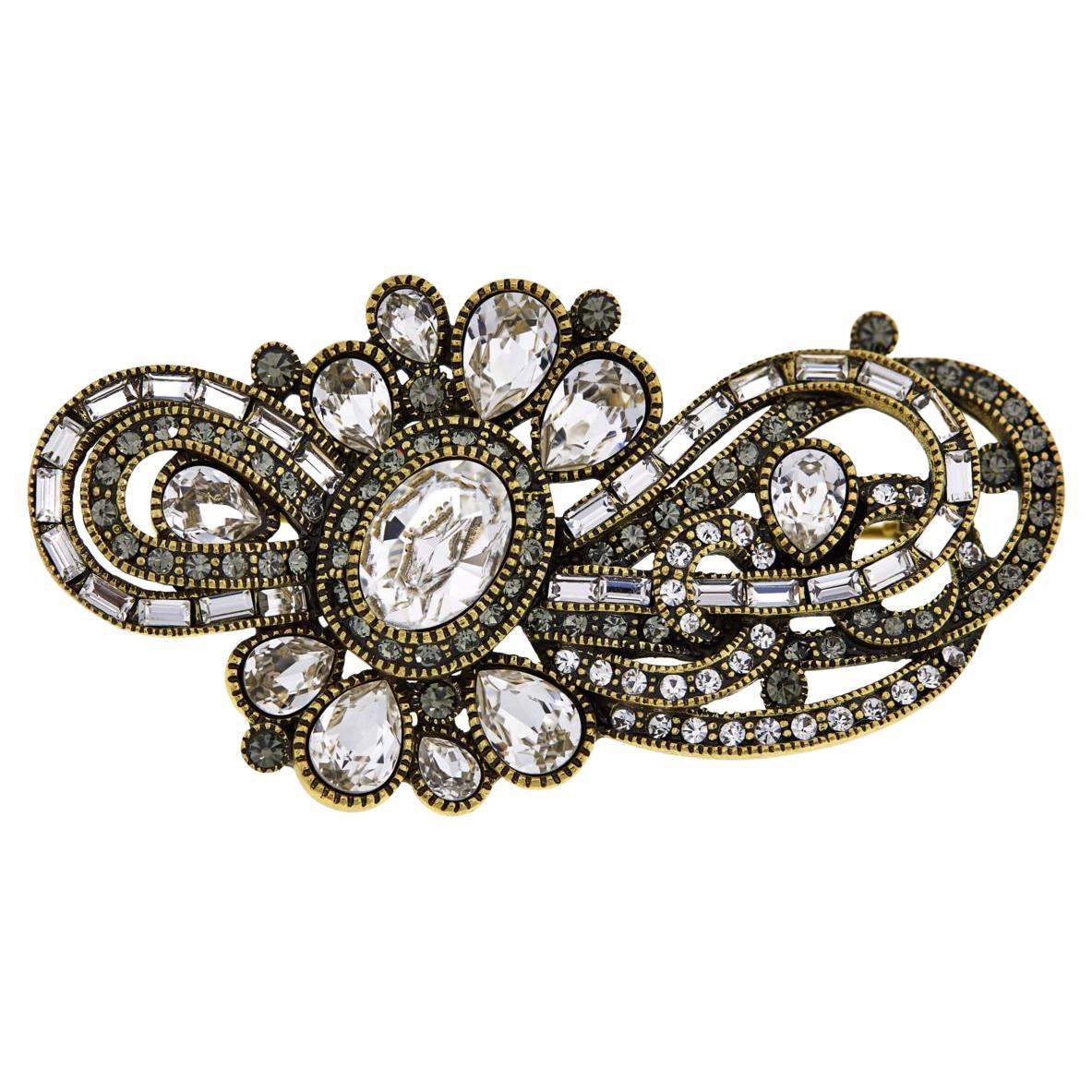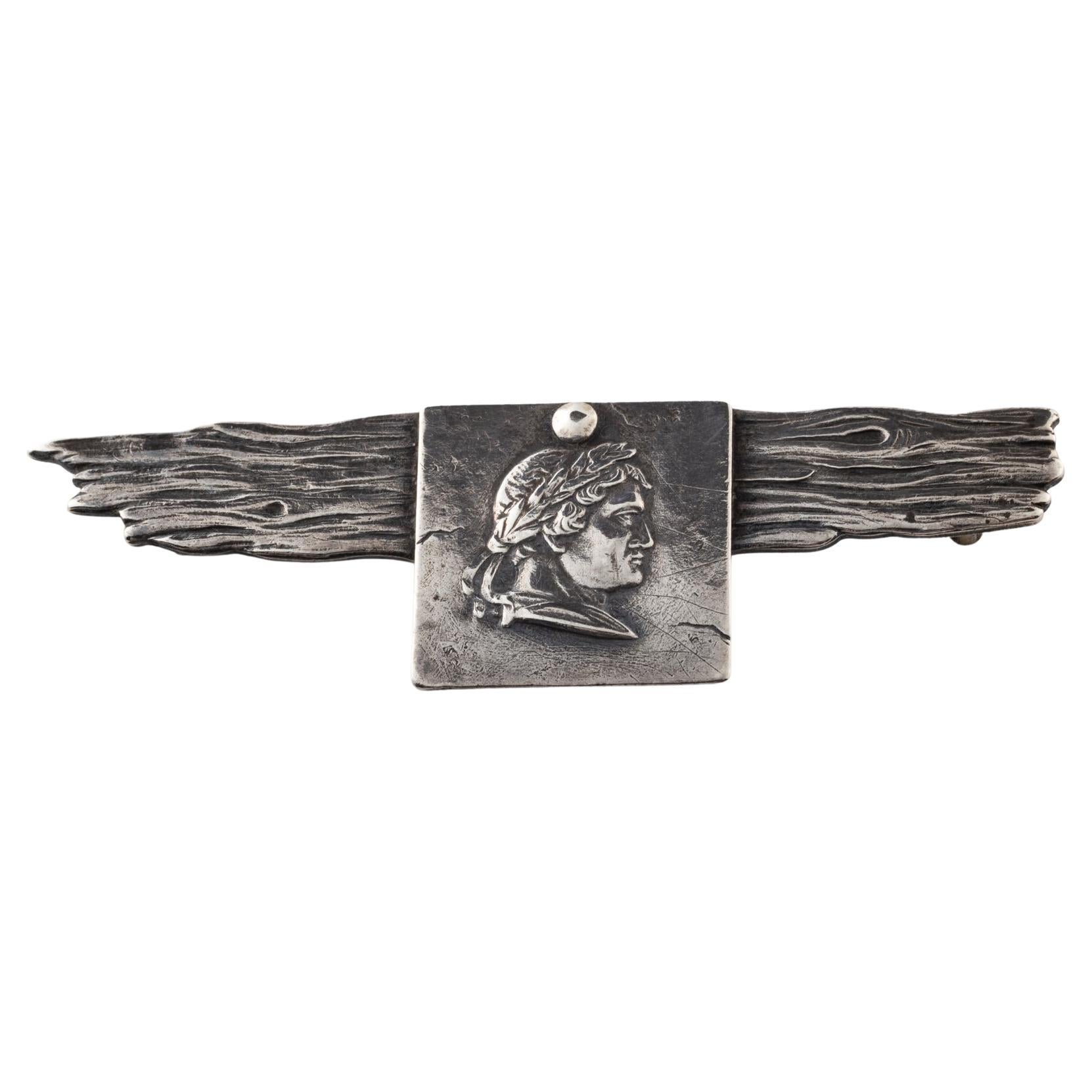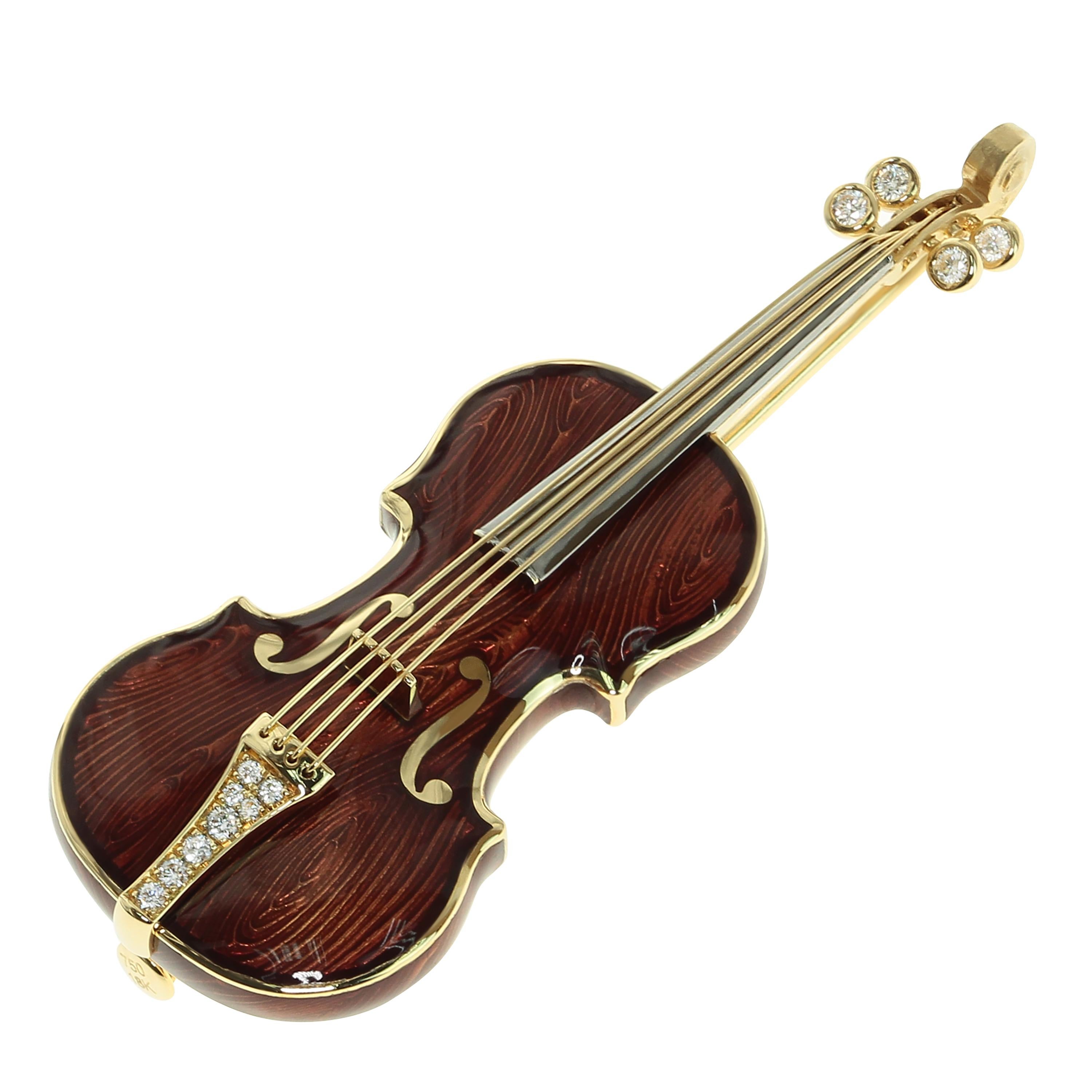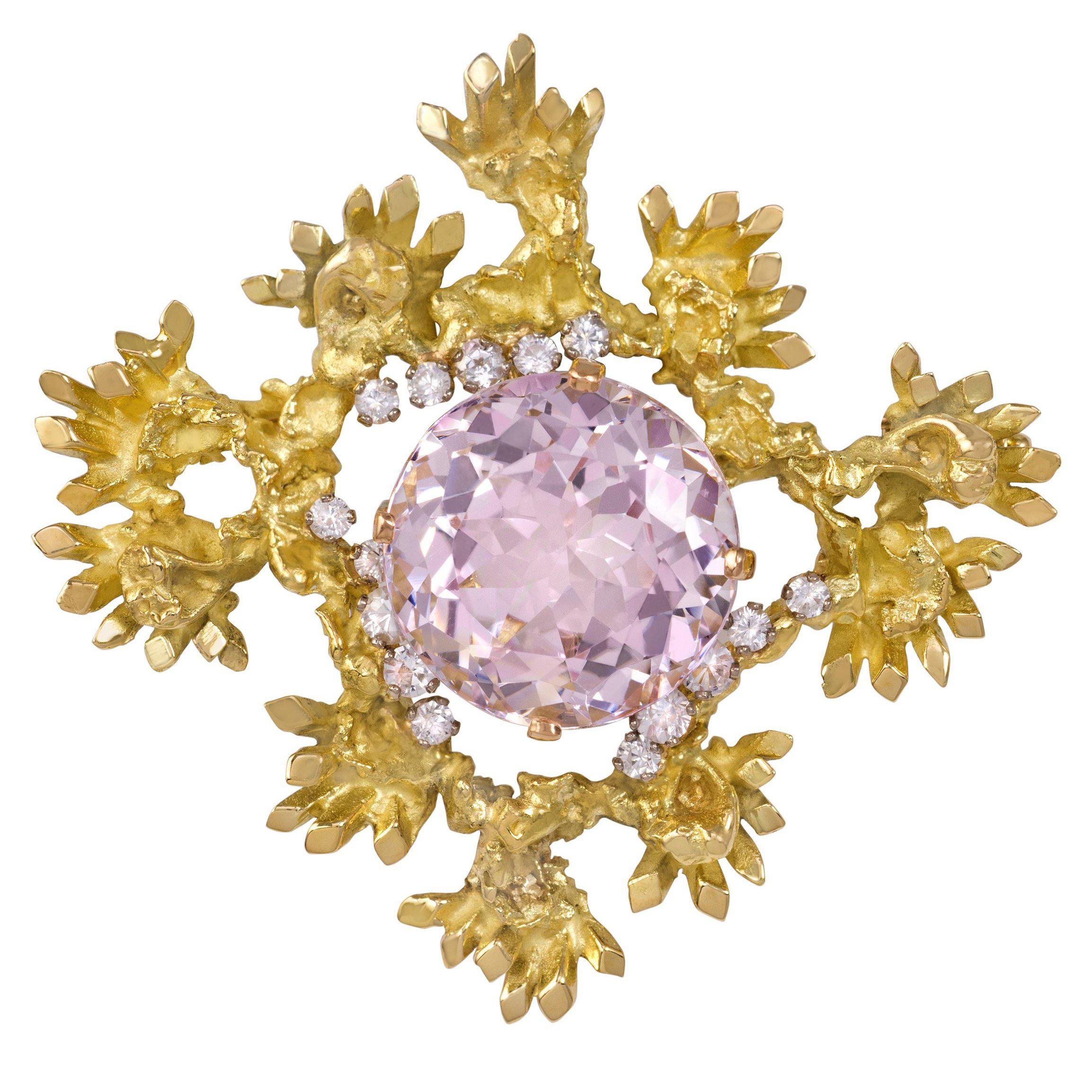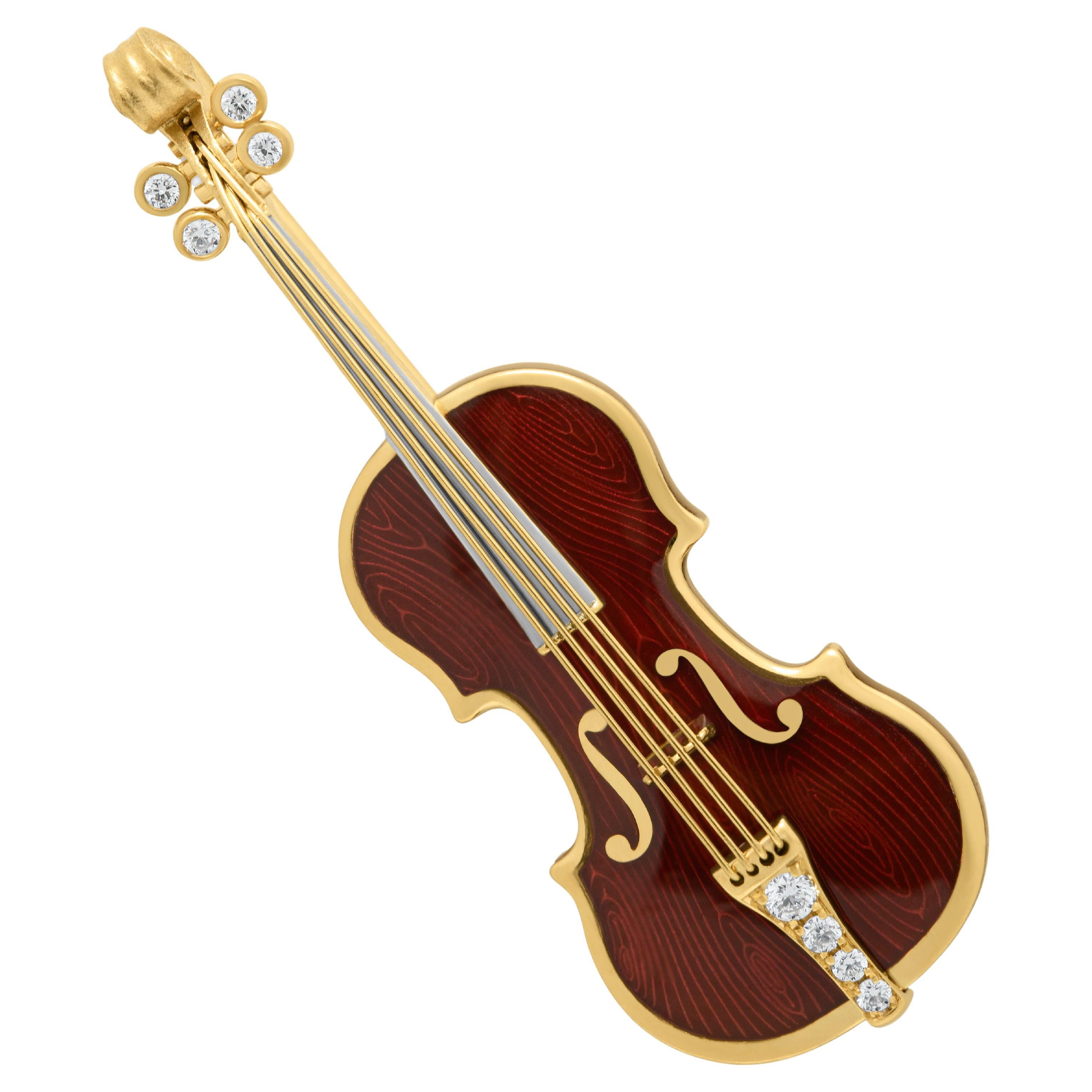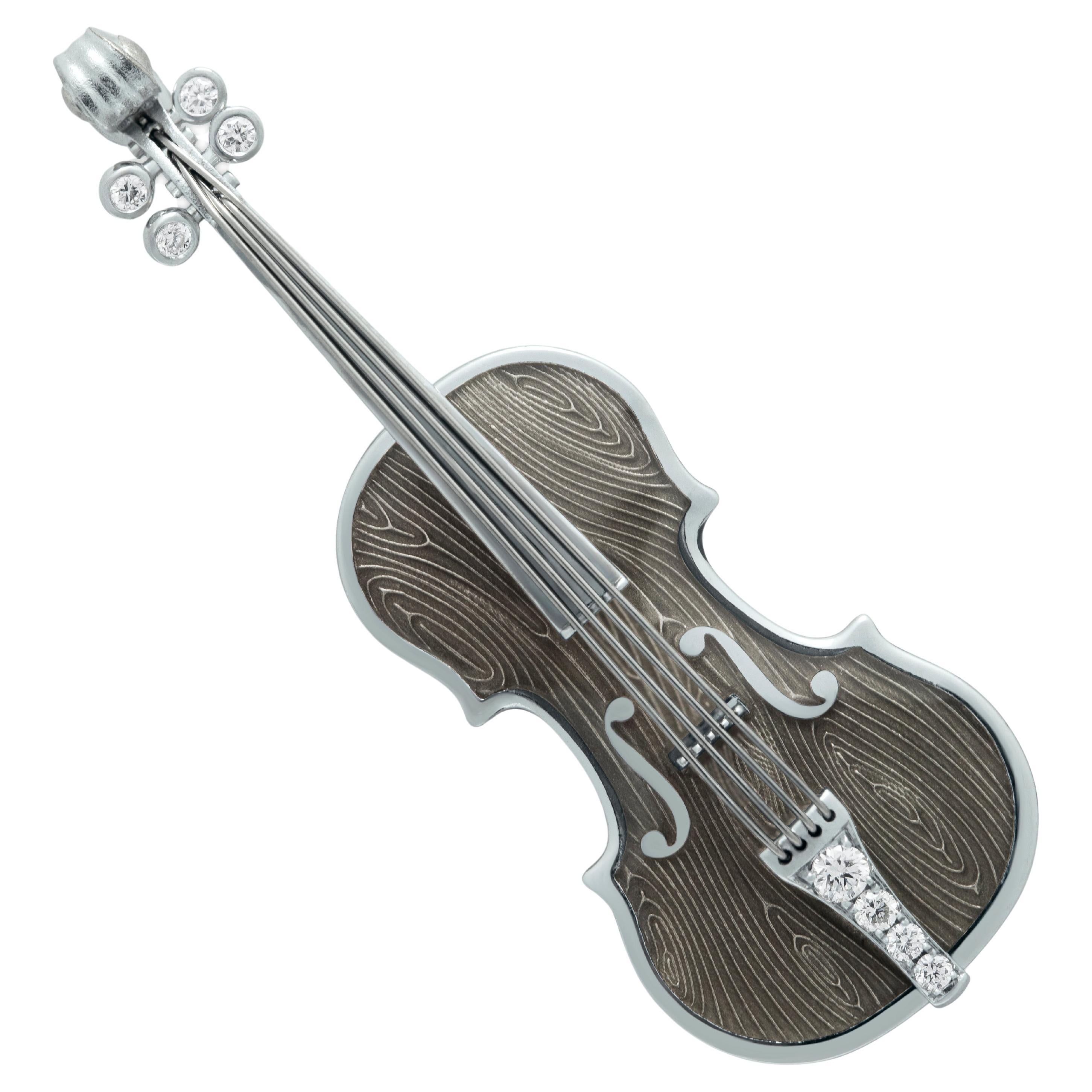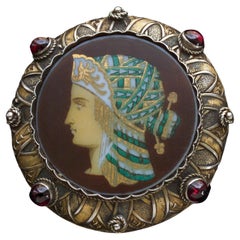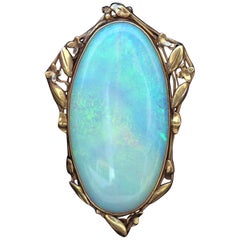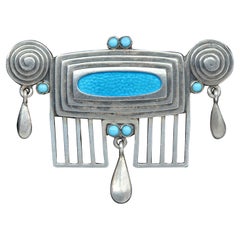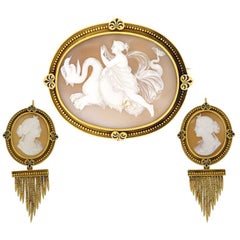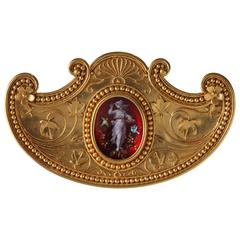
John Brogden "Primavera" Classical Style Brooch
View Similar Items
Want more images or videos?
Request additional images or videos from the seller
1 of 8
John Brogden "Primavera" Classical Style Brooch
About the Item
- Creator:John Brogden
- Metal:18k Gold
- Weight:16 g
- Dimensions:Height: 1.34 in (34 mm)Width: 2.37 in (60 mm)
- Style:Etruscan Revival
- Place of Origin:United Kingdom
- Period:1880-1889
- Date of Manufacture:Circa 1881
- Condition:
- Seller Location:London, GB
- Reference Number:Seller: 82721stDibs: LU3641452423
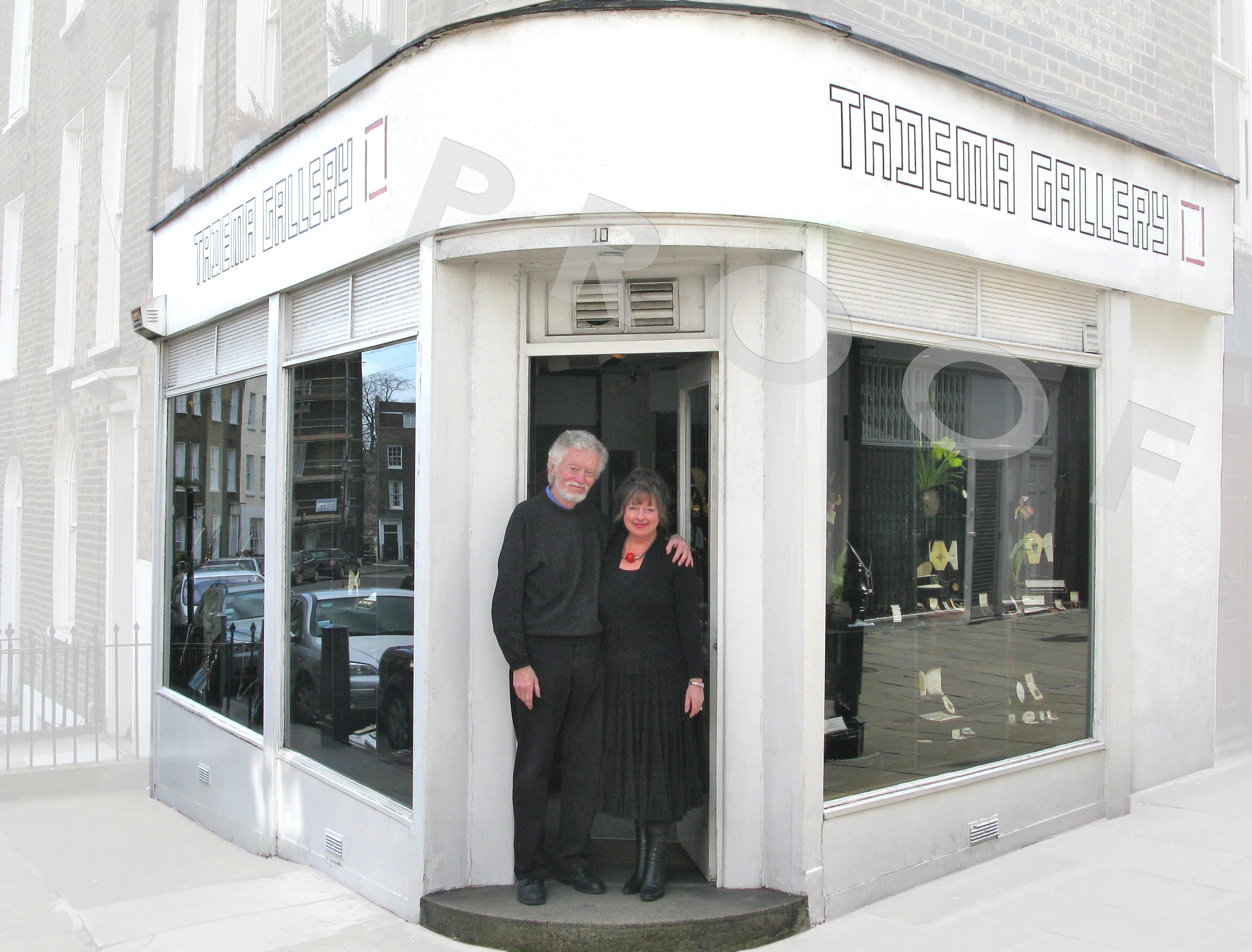
About the Seller
5.0
Recognized Seller
These prestigious sellers are industry leaders and represent the highest echelon for item quality and design.
Established in 1978
1stDibs seller since 2012
9 sales on 1stDibs
More From This SellerView All
- Revivalist Brooch, circa 1870Located in London, GBRevivalist Brooch, circa 1870 Additonal Information: Material: Partly Gilded Silver, Ceramic & garnets Origin: Probably Italian, c. 1870 Case: Fitted Case Dimensions: Diameter 5.40...Category
Antique 19th Century European Revival Brooches
MaterialsGarnet, Silver
- Rhoda Wager Arts & Crafts BroochLocated in London, GBAn impressive Arts & Crafts brooch by Rhoda Wager. The fabulous precious opal is approximaety 60 carats, mounted in gold. llustrated in our book: Beatriz C...Category
Vintage 1910s Australian Arts and Crafts Brooches
MaterialsOpal, 14k Gold
- Jugendstil Brooch by Andreas Odenwald, circa 1905Located in London, GBAndreas Odenwald Jugendstil Brooch, circa 1905 Jugendstil Brooch Silver & enamel H 2.00cm (0.79 in) W 3.80cm (1.50 in) Origin German, c. 1905 Marks AO monogram 900 & GESCHUTZ ...Category
20th Century European Jugendstil Brooches
MaterialsSilver
- Japonisme Butterfly Gold Enamel Signed Brooch, circa 1880Located in London, GBA lovely example of Japonisme in gold & enamel on porcelain probably from Limoges. Additional Information: Material: Gold, porcelain Origin: French, c. 1880 Marks: Monogram verso Ca...Category
Antique 19th Century French Aesthetic Movement Brooches
MaterialsGold
- Emile Olive An Impressive Belle Epoque Brooch Pendant by Fonsèque & OliveLocated in London, GBIllustrated in our book: Beatriz Chadour-Sampson & Sonya Newell-Smith, Tadema Gallery London Jewellery from the 1860s to 1960s, Arnoldsche Art Publishers, Stuttgart 2021, cat. no. 46...Category
Antique 1890s French Art Nouveau Brooches
MaterialsDiamond, Emerald, Natural Pearl, 18k Gold, Silver
- Jugendstil Brooch Gold Sapphire Attributed to Fritz Wolber, c. 1900Located in London, GBJugendstil Brooch Attributed to Fritz Wolber, circa 1900 llustrated in our book: Beatriz Chadour-Sampson & Sonya Newell-Smith, Tadema Gallery London Jew...Category
Early 2000s German Jugendstil Brooches
MaterialsGarnet, Blue Sapphire, Gold
You May Also Like
- John Brogden Shell Cameo Brooch and Earrings, English, circa 1870By John BrogdenLocated in London, GBAntique shell cameo brooch and earrings by John Brogden, English, circa 1870. A yellow gold suite of jewellery, the brooch composed of a horizontally situated oval Bull’s Mouth shell cameo of the Greek goddess Selene riding a serpentine dragon in a rubover collet setting, encircled by a conforming frame of gold beading and twisted gold wire punctuated with four gold palmette form plaques engraved and decorated with dark blue enamel and placed at the cardinal points, the reverse mounted with a hinged pin and scroll clasp, the earrings each composed of a vertical oval Bull’s Mouth shell cameo engraved with a bust length portrait of Selene with crescent-set headdress, encircled by a conforming frame matching that of the brooch with the addition of a pendant decoration composed of a horizontal bar of gold beading and twisted gold wires suspending gold link chains graduated from centre and ending in conical gold elements, the reverses mounted with French wire fittings, all in a fitted red leather case, the interior marked ‘FIRST CLASS PARIS MEDAL/ 1855.1867.1851/ PARIS FIRST CLASS & LONDON PRIZE MEDALS/ JOHN BROGDON/ Goldsmith/ MANUFACTORY/ 16, Henrietta St. Covent Garden/ London’. The cameo—defined as a gem, usually either a mineral or a shell, upon which a design has been carved in relief—is believed to have originated in Hellenistic Greece, during the third century BC. These miniature sculptures, at that time confined to the medium of hardstone, are thought to have been made with the primary purpose of personal adornment. The same practice of mounting cameos in jewellery was then continued by the Ancient Romans, and they are known to have been worn by many a Roman emperor. After the fall of Rome the fashion for cameos went into a decline, until it was again revived during the Renaissance period, brought about by a keen interest in the ancient world. At this time both antique and contemporary cameos were mounted in jewellery, as well as collected as objet d’art. The art of cameo cutting was revived in Italy, where it would remain a centre for the coming centuries. Again there was a lull in interest in carved gemstones, until the Neoclassical revival of the eighteenth century, largely stimulated by the discoveries of the ancient Roman cities of Pompeii and Herculaneum. As with the Renaissance, antique specimens were generally prized over modern cameos, and the worldliest men in Europe held them among their collections of art and antiques. That said, carving centres in Rome and Torre del Greco (near Naples) in Italy were established in response to the demand of the Grand Tourists, who travelled to Italy and Greece to become educated in the wonders of the ancient world. It was at this time that shell cameos, mostly made in Torre del Greco due to its proximity to the sea, became more popular, owing to the relative ease in carving shell over hardstone. In addition to Rome, hardstone cameos also became a specialty of Idar Oberstein, Germany, which had a long history with both the gem mining and cutting trade. In a shift away from the collector’s cases of the previous century, the nineteenth century saw a strengthening in the fashion for wearable cameos. After the Empress Josephine donned a cameo-set suite of jewellery at the coronation of Napoleon in 1804, cameo jewellery became all the rage. Napoleon played a further hand in promoting the art by establishing a gemstone carving school in Paris, inspired by his appreciation for the arts of the ancient world. By the mid-nineteenth century shell cameos, in part due to their lightness compared with hardstone cameos, were the height of fashion. Large shell cameos as well as hardstone cameos were set into contemporary mounts, often as suites of jewellery. Some of the best cameos of the nineteenth century—carved by a select group of recognized carvers—were set into revivalist mounts, corresponding to the subject matter. In Victorian England cameo jewellery was particularly prized, due in part to the fact that the Queen owned and wore a number of cameo jewels. One example which can often be seen in official portraits is the Badge of the Order of Victoria and Albert, carved by Tommaso Saulini of Rome, who also produced cameos for the maker of the present suite, John Brogden. To meet demand some carvers set themselves up in London, including William Schmidt, a German carver from Idar Oberstein, who produced cameos for top London jewellers, including Brogden, Carlo Giuliano and Child & Child. In fact, Schmidt purports to have been the first to carve cameos out of opal, which Brogden reportedly displayed in the Paris Exhibition of 1878. An extant example, now in the collection of the British Museum, was set by the Giuliano firm. Regarding subject matter, cameos throughout time have been largely figural, from bust length profile portraits to scenes with multiple full-length figures, and sometimes animals. Ancient Greek and Roman cameos often depicted mythological scenes as well as contemporary figures. During the Renaissance, mythological scenes were popular, often taken directly from ancient sculpture, as well as portraits of notable contemporary figures. During the eighteenth and nineteenth centuries, due to the revivalist styles, both Renaissance and Classical subjects were copied and set into matching (and sometimes unmatching) revivalist mounts. From the Renaissance through the Victorian era, being able to recognize the source of the carving in a cameo was a mark of erudition, revealing in the wearer knowledge of Classical art. As mentioned, the present cameo parure...Category
Antique 1870s English Victorian Brooches
MaterialsYellow Gold
- Luise Classical 18 kt Gold Brooch with RubiesLocated in Marcianise, Marcianise (CE)SHIPPING POLICY: No additional costs will be added to this order. Shipping costs will be totally covered by the seller (customs duties included). PS: THIS POLICY IS NOT APPLICABLE TO ITEMS WITH FIX PRICE, ITEMS AT AUCTIONS AND ONGOING PROMOTIONS. Classical 18 kt gold brooch...Category
Late 20th Century Italian Retro Brooches
MaterialsRuby, 18k Gold
- Classical Diamonds 18 Karat White Gold Violin BroochBy Mousson AtelierLocated in Bangkok, THClassical Diamonds 18 Karat White Gold Violin Brooch Get ready to feel fancy and proud with Mousson Atelier's 18K White Gold and Diamond Violin Brooch. Every element, from the delic...Category
21st Century and Contemporary Thai Contemporary Brooches
MaterialsDiamond, White Gold, Enamel
$15,480 / item - John Iversen Patinated Bronze Leaf BroochBy John IversenLocated in Darnestown, MDJohn Iversden is well known for his handmade jewelry inspired by forms in nature. In the 1990's and early 2000's, he did a serious of leaf brooches, usually made of patinated bronze....Category
Late 20th Century American Modern Brooches
MaterialsBronze
- John Iversen Large Gold Maple Leaf BroochBy John IversenLocated in New York, NYJohn Iversen large gold maple lead brooch 18 karat yellow gold; marked Iversen, 18kt Size: width 4 inches, length 4.56 inches Total weight: 73.2 gramsCategory
Late 20th Century Brooches
MaterialsGold, 18k Gold, Yellow Gold
- Amazing Thai Classical Dancer Brooch w/Emeralds, Sapphires and DiamondsLocated in Palm Beach, FLThis lovely vintage brooch was fabricated from 18k yellow gold and platinum and is lavishly set with fine quality brilliant cut diamonds, vivid emeralds and blue sapphires. The eyes ...Category
Mid-20th Century Unknown Modern Brooches
MaterialsDiamond, Emerald, Ruby, Sapphire, 18k Gold, Platinum
Recently Viewed
View AllMore Ways To Browse
Antique Enamel Cross
Revival Enamel Brooch
Renaissance Revival Cross
Enamel Medals
Charing Cross
Medal Brooch
Medal Crosses
Primavera Italy Jewelry
Etruscan Cross
Antique Gorget
Renaissance Medal
Rhinestone Brooch
Brooches Rhinestone
Rhinestone Brooches
Rose Brooch 18k
18k Diamond Brooch Pendant
Diamond And Ruby Gold Pin
Large Retro Brooches

